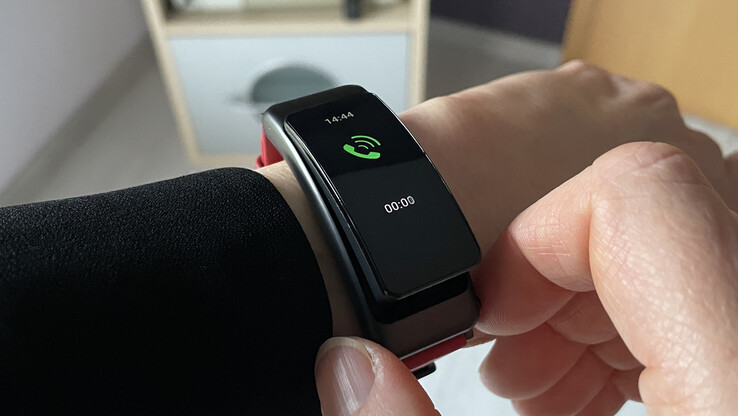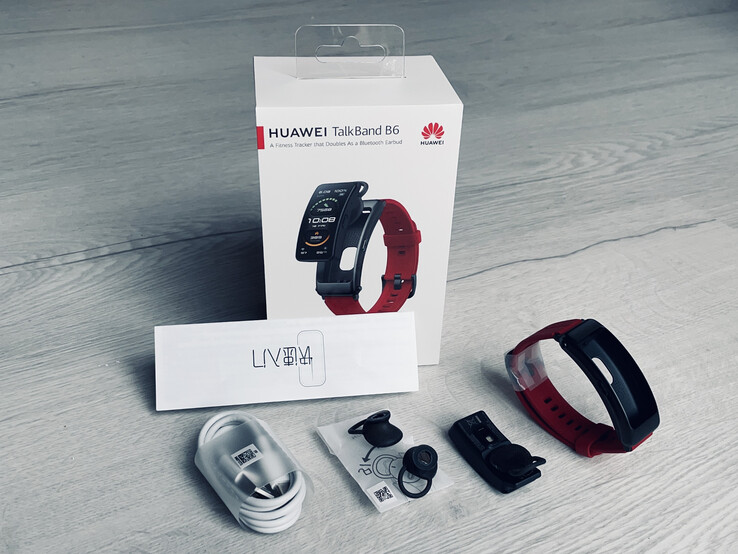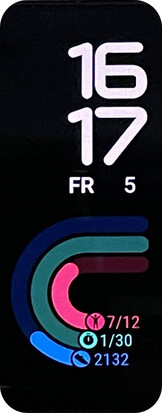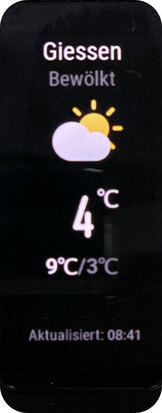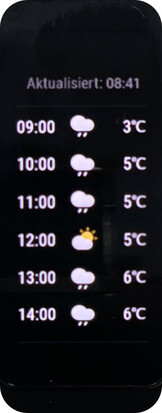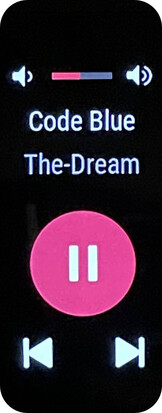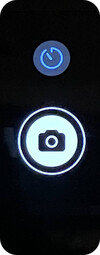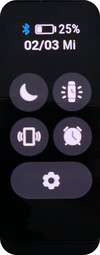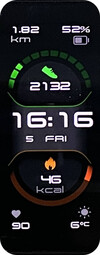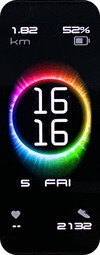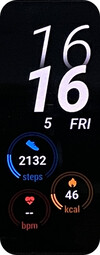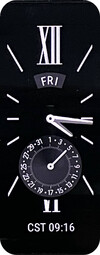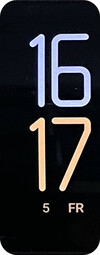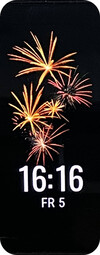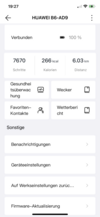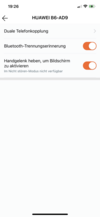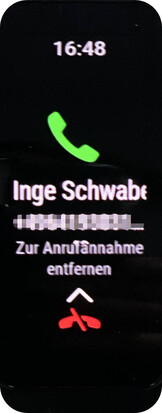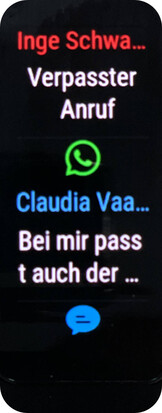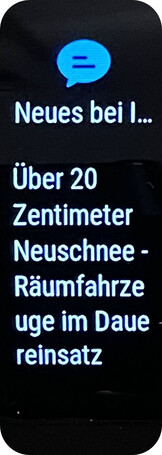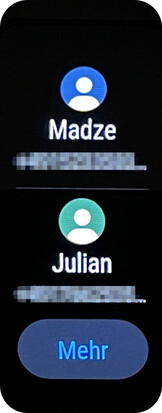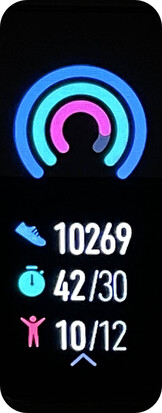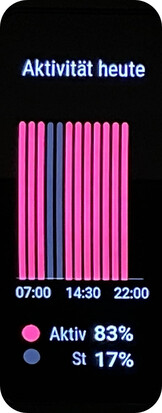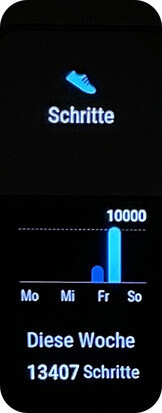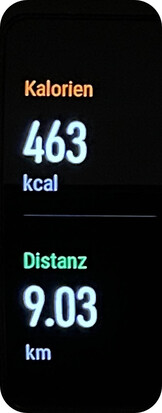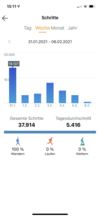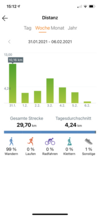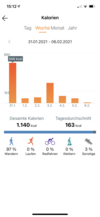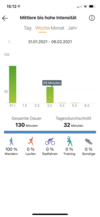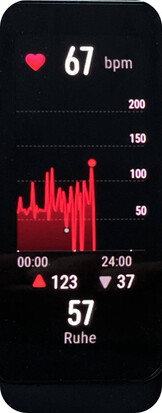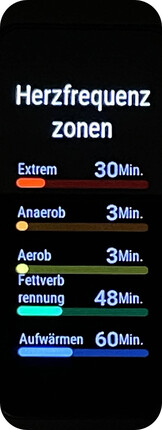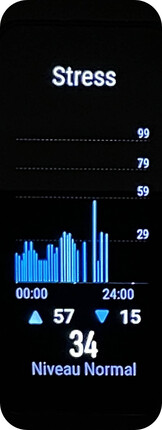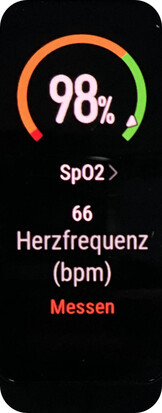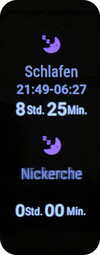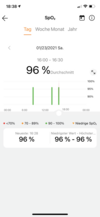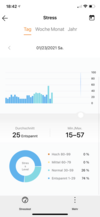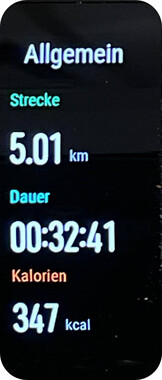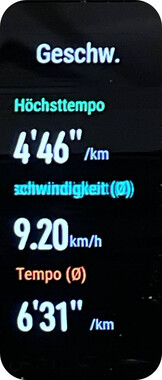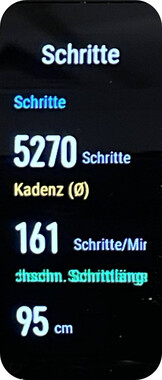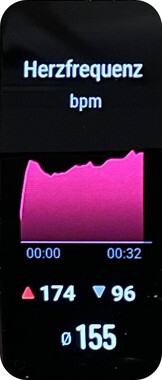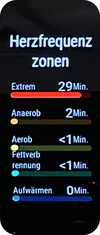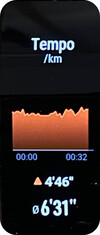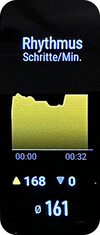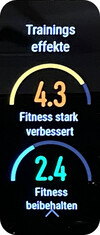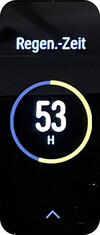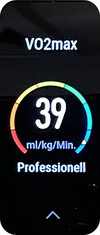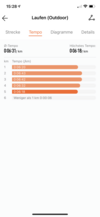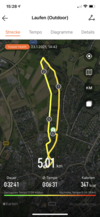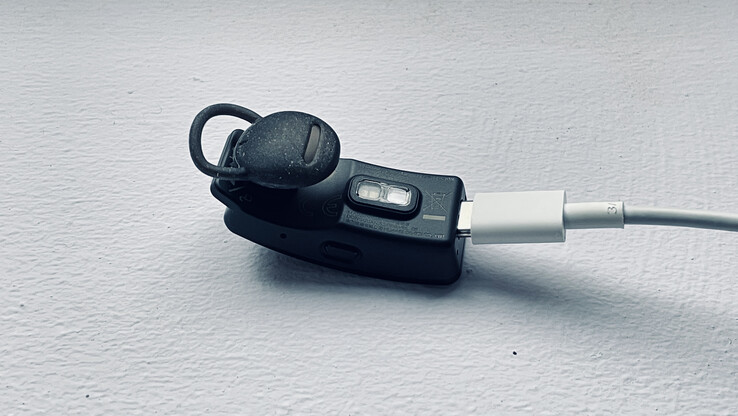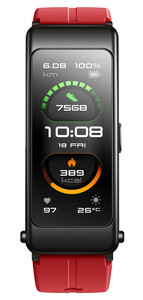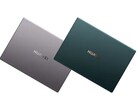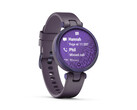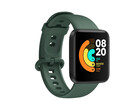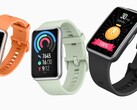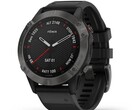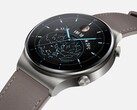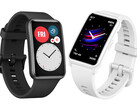The Huawei TalkBand B6 turns out to be a small jack-of-all-trades in our practical test.
Case and Equipment
The initial impression is good, and particularly the case made of matte stainless steel – an unusual material for a fitness band – gives a high-quality impression. Our test unit is the Sport Edition with a band made of fluoroelastomer. Alternatively, there is also an Elite Edition made completely from metal and a Classic Edition with a light or dark leather band.
At this point, visually the TalkBand has nothing to do anymore with the looks of fitness trackers such as the Samsung Galaxy Fit2 or the Band 5 from Xiaomi. Huawei already designed the second TalkBand with more pronounced edges, and since then the base unit has become a whole centimeter (~0.4 in) longer and also slightly wider and thicker. So it might not be pure intentional design, but also due the current 0.125 cm (~0.05 in) thickness of the large 1.53-inch curved glass display that it sticks out from the stainless steal base by about 1 mm (~0.04 in), as you can see in the pictures.
Pressing the two quick-release buttons on the sides with thumb and index finger, will release the headset from the base, but thanks to its magnetic adhesion it won't fall out. The hall sensor in the headset also triggers taking phone calls. While the sensors include an SpO2 sensor, what is missing is NFC and GPS. The TalkBand B6 is charged via a USB-C connection on the headset.
Setup and Operation
For setup, you need the Huawei Health app, which is available from the Playstore as well as for the iPhone. We first connected the TalkBand with an iPhone 12 Pro, and later with a Honor V20. This brought some differences to light, some of which are already known from other Huawei wearables. First, when linked to an iPhone, the TalkBand lacks the remote control for the smartphone player. Even when linked to an Android phone, Huawei offers the remote trigger for the camera only in connection with a Huawei or Honor smartphone that has at least EMUI 8.1 installed. Just like a period tracker for women, a warning function for low heart rate is also lacking, as well as there being 10 running programs that are only available within the Android app. In addition, iPhone owners have to be content with seven options for the watch face, whereas the Android App is able to optionally download more from the Internet. And in all cases, the Huawei TalkBand B6 lacks an always-on display.
The watch face and additional information such as the notifications transferred from the smartphone are easy to read on the large AMOLED display. Similar to other trackers, you can access information such as the heart rate or weather by using horizontal gestures. For making quick phone calls, there are widgets for favorite contacts and the list of recent calls.
Phone Calls and Notifications
When the Huawei TalkBand B6 signals an incoming phone call, it is easy to take out the headset by pressing the release buttons on both sides using your thumb and index finger. By doing this, you also accept the call.
After that, we did not manage as easily to fasten the headset to our ear. Even though the earpiece has a small clamp that prevents it from slipping off or becoming a nuisance to the wearer, the clamp and attachment are made from a very soft material that is squished down when you press the headset back into the band. Due to the lack of form stability of this material, it is difficult to always get it into the right position at the first try.
The TalkBand supports Bluetooth 5.2 and can optionally also be connected to a second phone to make phone calls. As long as it is connected to that phone, it won't receive notifications from the main phone. According to Huawei, the distance between the smartphone and the TalkBand can be up to 150 m (~492 ft) in a flat area without any obstacles in between. For indoor usage, Huawei lists some lab results according to which the voice quality remains stable over an area of 100 m² with two walls in between. However, apparently this requires optimal conditions and the best possible hardware in the receiving device. In tests using an iPhone 12 Pro and a Google Pixel 3, which both have Bluetooth 5, the Huawei headset performed hardly any better than other headsets – but not any worse either, if you consider that this is a multifunctional headset. In our test, the headset lost its Bluetooth connection three times, though. The smartphone wasn't too far away, but still too far to reconnect instantaneously. The voice quality is good in both directions. A vertical swipe will increase or decrease the volume during the call – if you use some slight pressure and there is no hair in the way.
Health and Fitness
In its Android app, Huawei writes about the TalkBand B6: "The band for managing your health information can also be used as a Bluetooth earpiece." To express it positively, this means that the TalkBand is a fitness tracker first and foremost, the quality of which was also confirmed during our test. It reported the idle times, steps and resulting distance, and elevation climbed with the same precision as other trackers from Huawei, also profiting from the exemplary visualized statistics of the Huawei Health app. When linked to an Android smartphone, women can report their periods and get an overview of their fertile days.
Heart Rate, Heart Rhythm, and Blood Oxygen Saturation
If you use the TalkBand in combination with an iPhone, not only will it lack the period tracker, but also a warning function in case your heart rate drops below a value that you can specify in the app. However, this goes only for the warning and not for the heart rate in general, since the TalkBand B6 will also record this around the clock in combination with the iPhone. The heart rate and moments of supposed stress are traced and displayed in some clear diagrams by the TalkBand as well as the app.
The Huawei TalkBand B6 won't measure the SpO2 blood oxygen saturation automatically around the clock but only when triggered manually. At least during the period of our testing, this was a difference to the Huawei Watch Fit, which only requires you to manually trigger the SpO2 measurement during the day since it received an update after our test. At this point, the Watch Fit will measure it automatically at night.
In general, a saturation value between 90 and 100 % is not considered worrisome. If it constantly drops below that, it might be an indication of a health hazard and should be reason to see a doctor. We compared the measurements of the TalkBand with those from a certified medical measurement device several times. The maximum deviation was 2% and the average deviation 1.2%.
Sleep Protocol
Even if the TalkBand lacks the nightly measurement of the blood oxygen saturation, the tracker will record a detailed sleep protocol with the help of the Huawei TruSleep algorithm. The app delivers details on the quality of the sleep and breathing that was determined, and it also informs about possible improvements. The diagram reflects wake times, deep and light sleep phases, and the REM (Rapid Eye Movement) phases in between. As far as we can understand based on the times of falling asleep and waking up, wake times, and a subjectively restless or restless sleep, the quality of the recording is correct.
Recording of the Trainings
While the quality of the Huawei TalkBand B6 corresponds to the level of the rest of the Huawei wearables in terms of health tracking, the sport functions lack some features.
This begins with the meager selection of the different sports: In addition to cross training and a rowing ergometer, it includes walking, running, and biking, indoors and outdoors each. For hiking, you can select walking, but for many other sports, the only selection available is the free training mode, since it lacks additional differentiation such as for yoga or HIIT, as well as a swimming program. While you would not be able to dive deep, you should be able to swim, since the case protection according to IP57 prevents damage from splashes and temporary immersion under water. As far as the band goes, for that activity you should choose the Sport Edition and not the Classic Edition with the leather band. In addition, the Android app offers 10 running trainings, while the iPhone app lacks this as well.
The TalkBand doesn't have its own GPS. While running, hiking (walking) or biking, the route is recorded using A-GPS, so it is using the smartphone GPS. Not only does this mean that you cannot leave your smartphone at home when going for a jog, but it is also more susceptible to errors. If the TalkBand looses the connection to the smartphone during the activity, the route recording will end. This also happened during our test. Even though the TalkBand recorded the complete workout and determined parameters such as distance and speed using intelligent algorithms fairly accurately, it did not automatically reconnect the interrupted Bluetooth connection, so it also did not complete the route recording.
Running and fast walking will register an automatic training recognition. The TalkBand will vibrate after about five minutes and ask whether you would like to record the activity as indoor or outdoor workout.
After a workout, the TalkBand displays the maximum oxygen intake, evaluates the training effect, and states how many hours of rest you should give your body to recover before starting the next training. The TalkBand also stores the previous training information and diagrams, and the app will supplement this with weekly or monthly analyses.
Battery Life
In our practice test, the 120-mAh battery lasts for two days on average, and three days when it is used only little. The main determining factor is how much you use the headset for making phone calls, since this will shorten the battery life significantly. Huawei specifies a pure talk time of 8 hours.
When charging, the battery will already reach 20% of its capacity within 5 minutes, and more than 90% in half an hour. However, from then on, the process slows down considerably, and it takes almost one hour until it is fully recharged.
Verdict
During the test, the hybrid device performed its two tasks well, but it also showed some weaknesses in both tasks. As far as the headset goes, the voice quality is good, but the interruptions we experienced make use feel insecure about using it to take important calls, unless the smartphone is in the same room.
As a fitness and health tracker, the TalkBand does an excellent job – just like most of the other Huawei fitness trackers, all of which also benefit from a great smartphone app. The integration of an SpO2 sensor in the newest TalkBand is another positive point. On the other hand, the TalkBand fulfills the demands on a good sports tracker only to a limited extent: While the analyses are good, the selection of various types of sports is very small.
The Huawei TalkBand B6 stands the test as a headset and health tracker. However, without GPS and with a low selection of the various types of sports, it shows some weaknesses.
In practice, we liked the uncomplicated charging via USB-C cable, which you could also borrow from friends or colleagues in case you need it on the road. And a final subjective impression: While the TalkBand seemed heavy when holding it in the hand, this impression disappeared when wearing it on the arm, and it felt just as light as other fitness trackers, despite its larger size.
Price and Availability
During our testing period, the most affordable offer came from a sales event by Huawei itself. For the Sport Edition, you can save 50 Euros (~$60), and for the other versions, 70 Euros (~$84) if you get it from the online shop of the manufacturer. When the sale ends, it is available (in Germany) for example from Cyberport and Amazon at currently around 180 Euros ($217).




